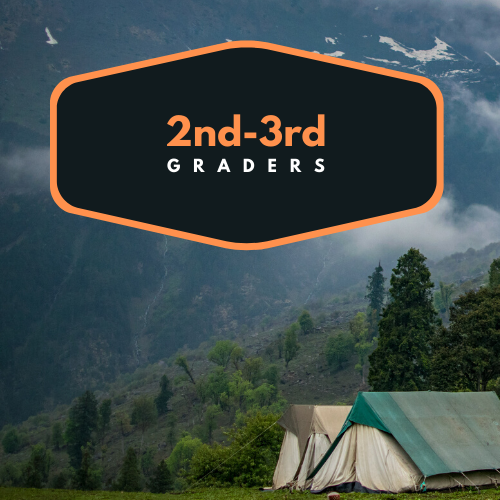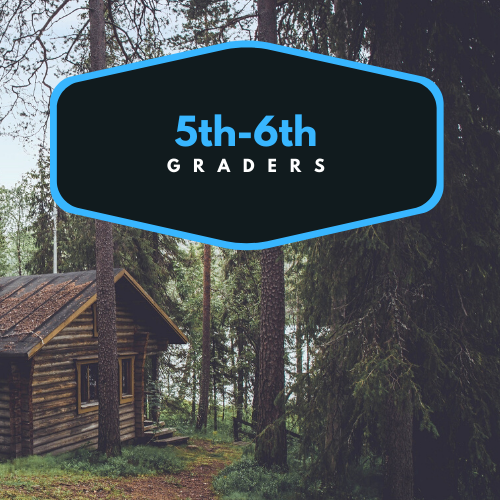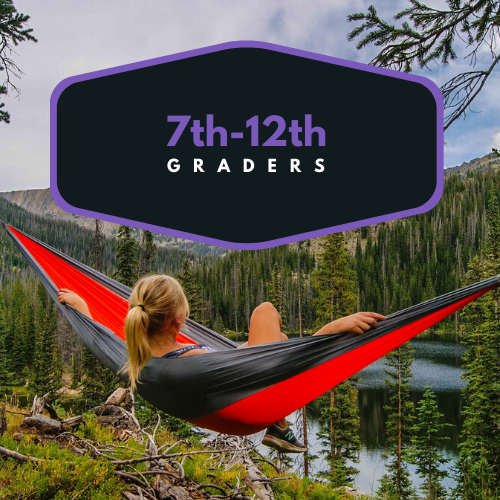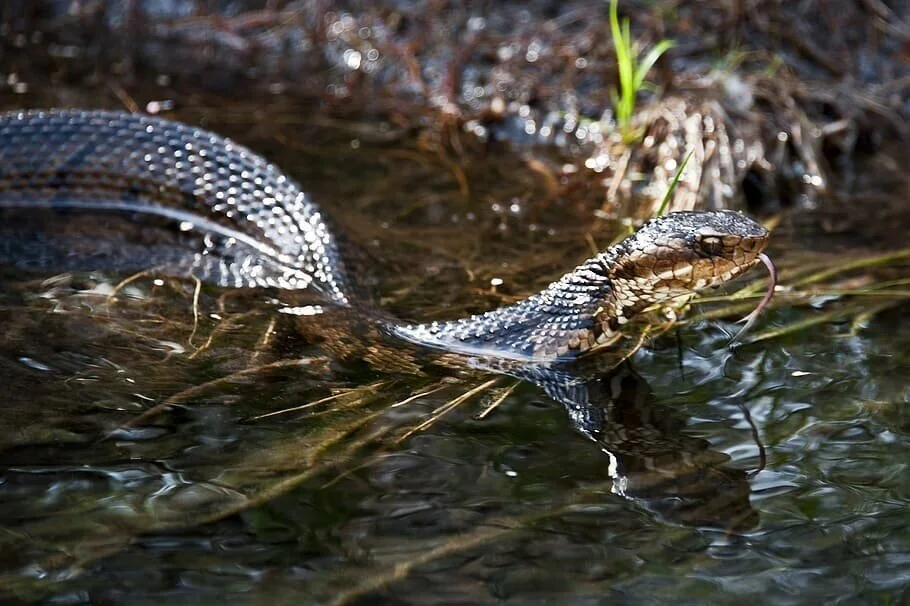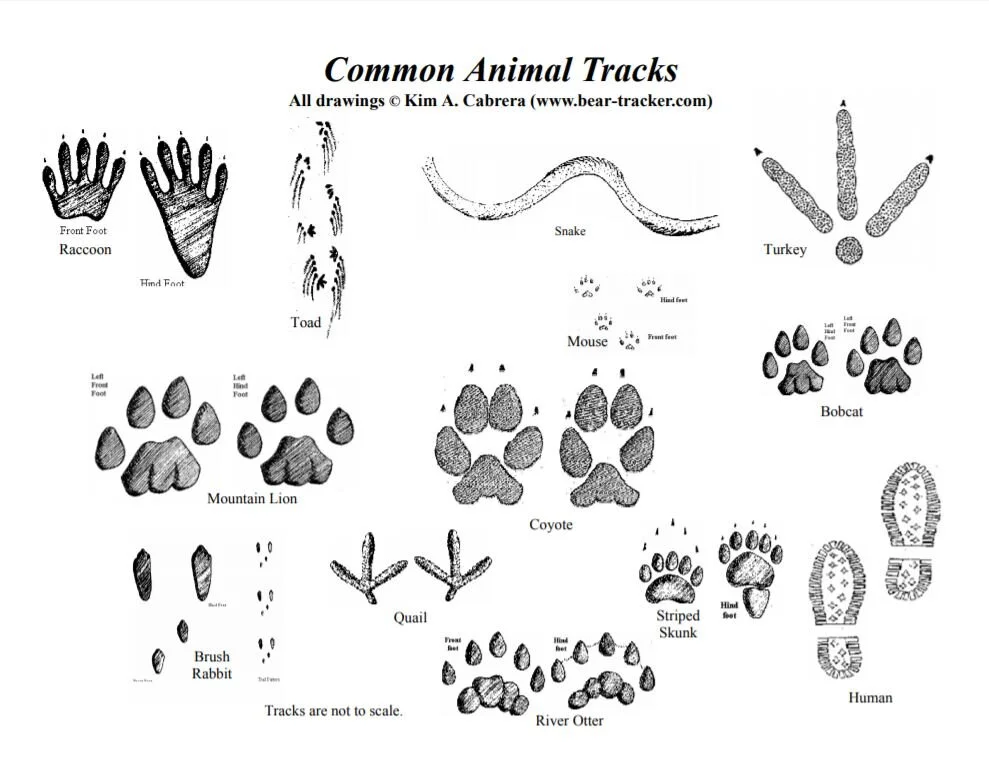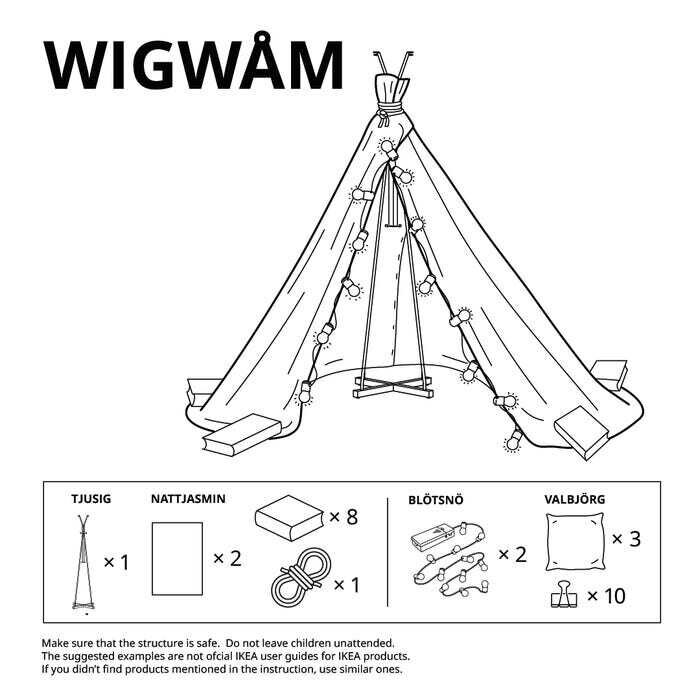Sugar Hollow Day Camp Virtual Camp
We are facing COVID-19 like Girl Scouts: We’re blazing our own trail.
Welcome to camp!
Get Started!
Camper Units:
Click the picture of your rising grade level to learn more about your camp unit.
Rising Kindergarten/1st Graders
discoverer unit
At Sugar Hollow Day Camp, rising Kindergartners/1st graders are in our Discoverer unit! During the day, Discoverers base camp in Running Creek tent #1. During our Thursday night camp out, Discoverers have a sleepover in our Art Barn.
Running Creek Tent
Art Barn
Here’s a checklist of the activities you will complete later during Virtual Camp. Activity videos, directions, and challenge activities can be accessed by clicking the activity links in our Have Fun section.
By completing our website activities listed in this checklist, you are earning your Discoverer bar:
click to learn about going virtual
Rising 2nd and 3rd Graders
Brownie units 1, 2, & 3
At Sugar Hollow Day Camp, rising 2nd and 3rd graders are in our Brownie units. During the day, our Brownie units base camp in Running Creek tents #2, 4, and 6. During our Thursday night camp out, Brownies camp in their platform tents.
Running Creek
Running Creek Tent
Here’s a checklist of the activities you will complete later during Virtual Camp. Activity videos, directions, and challenge activities can be accessed by clicking the activity links in our Have Fun section.
By completing our website activities listed in this checklist, you are earning your Camper (rising 2nd) or Brownie (rising 3rd) quarter circle:
click to learn about going virtual
Rising 4th Graders
Fly-up unit
At Sugar Hollow Day Camp, rising 4th graders are in our Fly-Up unit. During the day, our Fly-Ups base camp in the Patterson tents. During our Thursday night camp out, Fly-Ups pitch their own pup tents and camp in the field.
Patterson Tents
Pup Tents
Here’s a checklist of the activities you will complete later during Virtual Camp. Activity videos, directions, and challenge activities can be accessed by clicking the activity links in our Have Fun section.
By completing our website activities listed in this checklist, you are earning your Explorer bar:
click to learn about going virtual
Rising 5th & 6th Graders
Junior Unit
At Sugar Hollow Day Camp, rising 5th and 6th graders are in our Junior unit. During the day, our Junior unit base camps in Rocky Top (top of our little mountain). During our Thursday night camp out, Juniors camp in their cabins.
Rocky Top
Cabins
Here’s a checklist of the activities you will complete later during Virtual Camp. Activity videos, directions, and challenge activities can be accessed by clicking the activity links in our Have Fun section.
By completing our website activities listed in this checklist, you are earning your Adventurer (rising 5th) or Pioneer (rising 6th) quarter circle:
click to learn about going virtual
Rising 7th-12th Graders
CADette unit
At Sugar Hollow Day Camp, rising 7th - 12th graders are in our Cadette unit or on our Youth Staff. During the day, our Cadette unit base camps in the shelters by the field. During our Thursday night camp out, Cadettes pitch their own pup tents and camp in the field.
This year is an exciting year for our Cadettes as a new hammock unit is being built for their use.
Field
Here’s a checklist of the activities you will complete later during Virtual Camp. Activity videos, directions, and challenge activities can be accessed by clicking the activity links in our Have Fun section.
By completing our website activities listed in this checklist, you are earning your Woodswoman bar:
click to learn about going virtual
Did You Know?
This isn’t the first time Girl Scout camps have closed due to a pandemic!
In the 1930’s there was a polio pandemic that wasn’t safe for children. Girl Scout camps closed for the year, and some offered at-home camp options by posting activities in the local newspaper each week!
http://www.vintagegirlscout.com/
http://www.vintagegirlscout.com/
http://www.vintagegirlscout.com/
click to learn about this week’s at-home camp schedule
Weekly Schedule:
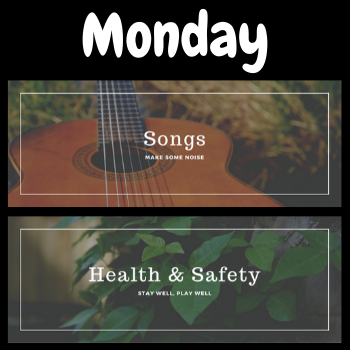


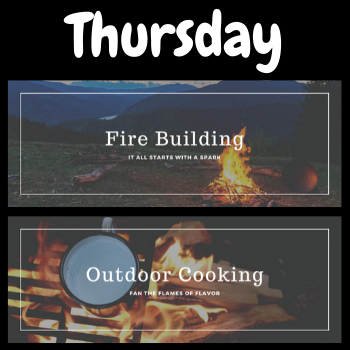
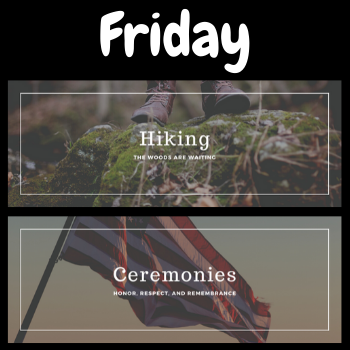
Each day, you will work on two new activities, called stations, from our Progression Patch Program.
Monday: Songs and Health & Safety
Tuesday: Tie-Dye and Knots
Wednesday: Tools and Olympic Games
Thursday: Fire Building and Outdoor Cooking
Friday: Hiking and Ceremonies
You can adapt these and do them in any order and at any time of your choosing.
Each day will also have a bonus whole-camp activity that all campers complete. These all build to Friday’s big event - our camp sleepover! On Friday, plan to camp in or camp out as a family. If you have safe outdoor access and camping gear, camp in your backyard, at a campground, etc. If you cannot safely camp outdoors, build a fort and camp inside! The skills you develop this week will help you prepare for this adventure.
click to learn about camp activities
Camp Activities
Activity Navigation
Activities are designed to be age-appropriate and build as girls grow and return to camp year after year. When you open each camp station webpage, you’ll start at the beginning and complete activities using navigation links like those seen here. These will ensure that you access the more appropriate activities for your camp level.
Activity Format
Station activities have two parts: learning and practice. We’ll use staff-made videos and internet resources to help you learn new outdoor skills, and then we’ll give you practice activities to get you outside and moving.
Learn
Learn new skills from your phone, tablet, or computer.
Practice
Take your new skills outside to practice.
Completing Activities
As you complete stations and activities, you can adapt them to meet the needs of your family. Based on weather conditions, access to materials, time, and experience, you can adapt activities and do them in any order and at any time of your choosing. The whole point is to have fun and develop new skills, so enjoy!
At the end of each station, you’ll have three navigation buttons:
Wow Wall
Celebrate your learning and achievements by sending us a picture or video of you completing one of the activities. We’ll celebrate with you and include examples of campers in upcoming camper emails.
Feedback
As you complete station activities, this link will allow you to give us feedback on your favorite activities, least favorite activities, and broken links/videos.
Return to Main Page
This link will help you return to the main Virtual Camp page in order to continue with further stations and activities.
Have Fun!
Click today’s day of the week picture, get started, and have fun!
SONGS
You can’t have camp without camp songs! Campers will learn some of our staff favorite Girl Scout songs, action songs, round songs, and quiet songs.
HEALTH & SAFETY
First, we’ll practice the buddy system and safety drills. Then, we’ll talk about camping safety rules, weather, first aid, and poison ivy.
MONDAY’S WHOLE-CAMP ACTIVITY: TOUR OF CAMP
Our camp is just outside of Charlottesville, VA in the mountains outside of the Shenandoah National Park.
We love that our camp is rustic and hidden in the woods! Use this button to view our GoogleMyMaps, and click on the pin drops to view photos and videos of our camp!
Celebrate! Send us a picture or video of your neighborhood or favorite camp.
TIE-DYE
It’s time for a camp favorite! Learn how to tie-dye shirts, other clothing, or craft paper.
KNOTS
Campers will learn progressive tool skills, such as overhand, square, larkshead, hitch, tautline, and sheet bend knots.
TUESDAY’S WHOLE-CAMP ACTIVITY: LEAVE NO TRACE
At Girl Scouts, we believe in responsible behavior and respecting the environment. That’s why Leave No Trace is such an important aspect of Girl Scouts! The Leave No Trace Center for Outdoor Ethics is a national organization that supports protecting the outdoors by teaching and inspiring people to enjoy it responsibly. That’s something we can get behind!
So, what does Leave No Trace mean exactly, and how can Girl Scouts ensure they’re practicing it daily? In general, the idea of Leave No Trace is to sustain the environment for generations to come. We can do this by being aware of how we’re interacting with the environment and making conscious decisions that serve to lessen our impact on nature. Here’s an overview of Leave No Trace practices:
There are seven principles of Leave No Trace. It’s important that Girl Scouts are familiar with these principles, considering so many of our activities happen in the outdoors. Let’s go through each one and think about how the principles apply to Girl Scouts.
Principle 1: Plan Ahead and Be Prepared
Before you start your outdoor adventure (no matter how small!), make sure you’re prepared. Make sure you’re familiar with regulations and special concerns about the area(s) you’ll be visiting, and keep in mind high-traffic times. Avoiding crowds will not only prevent protected wildlife from getting trampled, it will also make it a more enjoyable experience for the girls!
Depending on the size of your troop, consider splitting up into smaller groups. If there are too many people in one given spot, there might not be enough room on the trail for everyone to listen, talk, and share with each other. Smaller groups help us foster conversation while we’re mindful of the environment around us.
Principle 2: Travel and Camp on Durable Surfaces
Whether you’re visiting for a day or overnight, it’s important to stick to durable surfaces, like established trails and campsites, rock, gravel, dry grass, or snow. This is for the safety of everyone in your group as well as the safety of the environment. When we walk beyond established paths, we risk damaging vegetation and other organisms that can be damaged beyond recovery.
If your troop is staying overnight, remember that campsites are found, not made! You don’t need to alter an existing site to meet your needs. Try to find a site that is so highly impacted that further careful use will cause no noticeable impact.
Principle 3: Dispose of Waste Properly: Pack it in, Pack it out
One of the easiest ways to Leave No Trace is to dispose of any waste you’ve brought with you. If there are trash cans available, excellent! Use them for anything you no longer need, separating recyclable and compostable items if necessary. If there aren’t any trash cans, bring it all with you. This includes packaging, leftover food, and other litter. And if you’re camping overnight, don’t forget to check that you’ve grabbed all of your clothing, camping gear, and anything else non-edible you may have left behind.
And when nature calls, find a spot at least 200 feet from water, your camp, and trails, and dig a hole 6 to 8 inches deep for solid human waste. When finished, cover and disguise the hole. It’s not glamorous, but it helps protect the environment!
Principle 4: Leave What you Find
Girl Scouts love souvenirs as much as the next person, but during your outdoor adventure, the only souvenirs you should take are pictures! Leave rocks, plants, and other natural objects where you find them, and avoid building structures like forts or makeshift furniture. Leave those projects for your backyard.
Principle 5: Minimize Campfire Impacts
While you may not be in wildfire country, it’s still incredibly important to minimize the impact of your campfire. Keep in mind regulations for where you’re visiting (which you should’ve already researched as part of principle 1!), as fires might not be allowed.
When and where fires are permitted, keep them as small as possible. Only use sticks that can be broken by hand, no tools required. Once you’re done, make sure all wood and coals have burned to ash. Put out the fires completely, then scatter the ashes once they’ve cooled.
Principle 6: Respect Wildlife
One of the best parts of spending time outdoors is seeing all the amazing wildlife. But as exciting as it is to see animals in the wild, remember that they should be observed from a distance and should never be fed. It damages their health, alters natural behaviors, and exposes them to predators and other dangers.
Similarly, make sure food (including food waste!) is stored securely. Whether they’re fed intentionally or find your food on accident, wildlife can be very negatively impacted by human food.
Principle 7: Be Considerate of Other Visitors
Finally, remember to be considerate toward others, including those in your group. Ask questions courteously, avoid making loud noises, and yield to others on the trail. In short, be a sister to every Girl Scout—as well as every non–Girl Scout!
Whether going on a day hike around town or in the front country, or on a hiking trip to the back country, Girl Scouts are concerned with personal enjoyment of the outdoors, safety and environmental protection. All Girl Scouts are prepared for such activities by being trained, being prepared and adhering to the progression of each girl’s experiential scouting experience.
Celebrate! Send us a picture or video of you following a Leave No Trace principle.
TOOLS
Campers will learn progressive tool skills, such as kitchen blades, bow saws, pocketknives, and common household tools.
2021 SPECIAL: OLYMPIC GAMES
Based on WAGGGS and Girl Scouts of Japan’s Olympia Badge 2020 Activity Pack, campers will develop body, mind, and cultural skills.
WEDNESDAY’S WHOLE-CAMP ACTIVITY: COMMUNITY SERVICE
Changing the world happens one step at a time. As Girl Scouts, serving our communities is a core component of our beliefs and programming. Observe and reflect on your family, your neighborhood, your community, our country, and the world. What is a problem you see? How can you help fix it? Remember, one person may not be able to solve a problem, but one person can make a difference and inspire others to help as well. Find a problem in your world that is meaningful to you and find a way to help. Scroll through the ideas below for inspiration. Make sure that an adult approves your project before you start so that you can talk about any safety concerns and laws or regulations you may need to follow.







Celebrate! Send us a picture or video of you completing a service project.
FIRE BUILDING
This module has five parts. First, we’ll practice fire safety, then wood fires, cook stoves, charcoal stoves, and extinguishing fires.
OUTDOOR COOKING
This module has three skills: kaper charts, cooking, and dishwashing. Campers learn progressive outdoor cooking techniques.
THURSDAY’S WHOLE-CAMP ACTIVITY: WILD ANIMALS
Thinking back to No Leave Trace Principle 6 (Respect Wildlife), it’s important to learn about the wildlife in the area you will be camping or hiking in! You’ll need to know which animals you might see, how they behave, and whether they are dangerous. But more importantly, you’ll need to know how your behaviors can be dangerous for both the animals and yourself. Remember that wild animals are not pets! You should not interact with them, touch them, or feed them. Always keep in mind that the area was their home before you got there, and you should not do anything to damage or destroy their home land.
In the forests around our camp, there are more than 60 mammals calling our area home:
White-tailed Deer
Coyote
Gray Fox
Red Fox
Bobcat
Mountain Lion
Striped Skunk
Spotted Skunk
River Otter
Marten
Fisher
Long-tailed Weasel
Least Weasel
American Mink
Raccoon
Black Bear
Big Brown Bat
Silver-haired Bat
Red Bat
Hoary Bat
Small-footed Myotis
Little Brown Bat
Northern Long-eared Bat
Indiana Bat
Tri-colored bat
Virginia Opossum
Eastern Cottontail
Appalachian Cottontail
New England Cottontail
Beaver
Southern Red-backed Vole
Meadow Vole
Woodland Vole
Allegheny Woodrat
Golden Mouse
Muskrat
White-footed Mouse
Deer Mouse
Harvest Mouse
Southern Bog Lemming
Woodland Jumping Mouse
Meadow Jumping Mouse
House Mouse
Norway Rat
Black Rat
Northern Flying Squirrel
Southern Flying Squirrel
Woodchuck
Northern Gray Squirrel
Fox Squirrel
Eastern Chipmunk
Red Squirrel
Northern Short-tailed Shrew
Least Shrew
Masked Shrew
Long-tailed shrew
Smoky Shrew
Pygmy Shrew
Southeastern Shrew
Water Shrew
Star-nosed Mole
Hairy-tailed Mole
Eastern Mole
Virginia’s Poisonous Snakes
Virginia has 32 types of snakes, but only 3 of them are venomous! Our three venomous snakes are the copperhead, rattlesnake, and water moccasin. Generally, you can identify a venomous snake by looking for a pointy nose (instead of round) and a big head with skinny neck. While many people are afraid of snakes, snakes can be very helpful as they eat mice and other rodents who are in your garden, home, or campground. When you see a snake, it’s best to given them their space by walking around them and leaving them alone.
copperhead
rattlesnake
Water moccasins
Virginia’s Poisonous Spiders
Just like snakes, spiders sometimes have a bad reputation! But they are also helpful because they eat bugs, like mosquitoes. In Virginia, we have 57 types of spiders. Many are poisonous, but very few are dangerous to humans as our bodies are so much bigger than theirs. Three that are dangerous to humans in Virginia include the Brown Recluse, Black Widow, and Wolf Spiders.
Brown Recluse
Black Widow
Wolf Spiders
As you go out in the wild, remember to respect the wildlife and give them space. The National Park Service recommends staying at least 75 feet away from wildlife.
https://www.nps.gov/
As you start to go for hikes and camp outdoors, look for clues to discover what animals live in your area! One way to find out about your local wildlife is to look for tracks using picture guides, like this one:
Celebrate! Send us a picture or video of you learning about the wildlife in your area.
HIKING
Campers will learn progressive hiking skills, such as hiking safety, maps, trails, and compasses. After the skill builder activities, campers will practice their skills on an outdoor hike.
CEREMONIES
This module has two parts. First, we’ll learn about and practice flag ceremonies using the American flag. Then, we’ll look at traditional camp ceremonies, concluding with a celebration of your accomplishments this week!
FRIDAY’S WHOLE-CAMP ACTIVITY: CAMP OUT/CAMP IN
Let’s have camp’s biggest sleepover ever! If we were at camp this year, each grade-level group would camp out in different types of structures, like this:
Since we’re not at camp, we’ll have to do things a little differently. Do you have the gear for camping outside?
Let’s camp outside!
Here are some ideas to get you started:
Camping Out Ideas (click the picture for directions):
camping out packing list:
Tent/Shelter
Sleeping Bag
Sleeping Pad
Flashlight or Headlamp
Water
Food & Kitchen Gear
Day & Night Clothes
Toiletries
First Aid Kit
Let’s Camp Inside!
Here are some ideas to get your started:
Camping In Ideas from Ikea Russia:
camping in packing list:
Blankets
Pillows
Sleeping Bag/Bedding
Flashlight or Headlamp
Drinks & Snacks
Day & Night Clothes
Toiletries
First Aid Kit
Now get going! Sugar Hollow Day Camp is officially done, but the camping is just beginning! Use what you learned this week, and have an amazing night camping with your family!
Celebrate! Send us a picture or video of your family camping.




